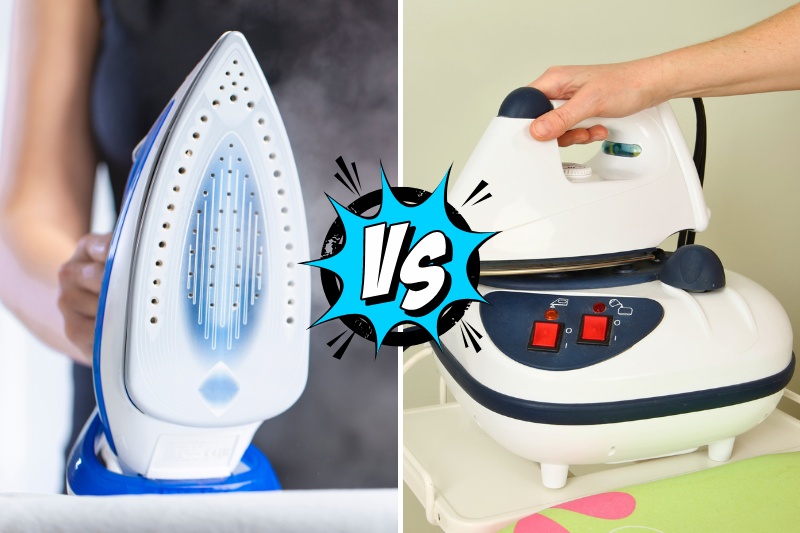Looking to upgrade your iron in the hope of reducing the number of creases in your clothes and bedding? Or perhaps your old one has broken and you’re not sure what to replace it with?
Then this is the guide for you.
While steam irons have been a household staple for years, high performing steam generator irons are growing in popularity.
But what exactly is the difference between the two? And which one is best for your needs?
In this article, we’ll explore the key features and benefits of steam irons vs. steam generators to help you make the right choice.
What Is a Steam Iron?

Steam irons feature a built-in reservoir which feeds water into a vaporisation chamber. There, the water is heated and turned into steam, which is then released onto the fabric being ironed through the soleplate.
The steam helps to relax the fibres, making it easier to remove wrinkles. Running the hot soleplate over the item then helps to dry out the dampened material.
What are the pros and cons of steam irons?
Steam irons are available to buy in lots of places. They are affordable and there are many different models to choose from to suit your needs.
Many also have handy adjustable temperature settings for different fabrics. This makes it easy to select the appropriate heat level for the garments you’re ironing.
Another advantage of steam irons is that they typically heat up in under a minute. They’re also relatively compact and easy to store when not in use.
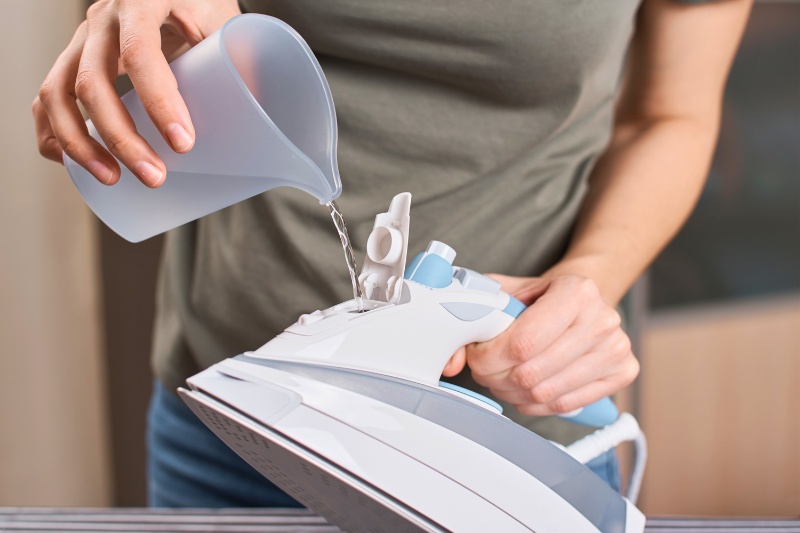
However, the downside to this is that their on-board water tanks only hold around 300 ml at the most. As a result, you’ll need to refill your iron regularly if you’re working through a large pile of laundry – every 15 minutes or so.
It’s also worth bearing in mind that steam irons aren’t as powerful as steam generators despite being weightier.
Their average output is around 35-50g of steam per minute, making them ideal for everyday ironing tasks.
But you’ll likely need to go over deep creases several times, prolonging the process. Or use the steam burst setting, which uses up the water even faster.
What Is a Steam Generator Iron?

Unlike traditional steam irons, steam generator irons have separate water tanks that are connected to the iron by a hose. These have much greater capacity and continuously deliver steam to the iron via a boiler system.
The steam produced is hotter, more consistent and in pressurised models, penetrates the fabric much more effectively – great for thicker fabrics!
What are the advantages of steam generators?
Other benefits of upgrading to a steam generator iron include their anti-drip technology and longer running time.
In fact, their water tanks can hold as much as 1.8 litres of water which lasts around 90 minutes.
You can therefore get through large loads and sizeable bed sheets without having to repeatedly refill your machine. Perfect for family households that do a lot of laundry!
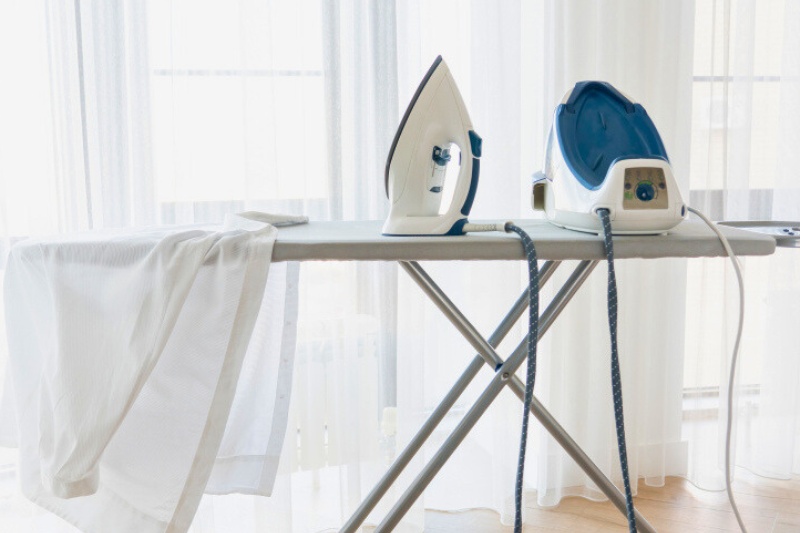
Better yet, the average steam output of a steam generator is three to four times greater than a steam iron.
This makes it easier and quicker to smooth out stubborn creases, saving you time and effort. And in some cases, you can even get away with only ironing one side of the fabric.
On top of that, once disconnected from the base, steam generator irons are lighter and more comfortable to handle for extended periods.
Some models even double as vertical steamers for smoothing dresses, curtains and more. But there are some cons to these machines.
Are there any disadvantages of steam generators?
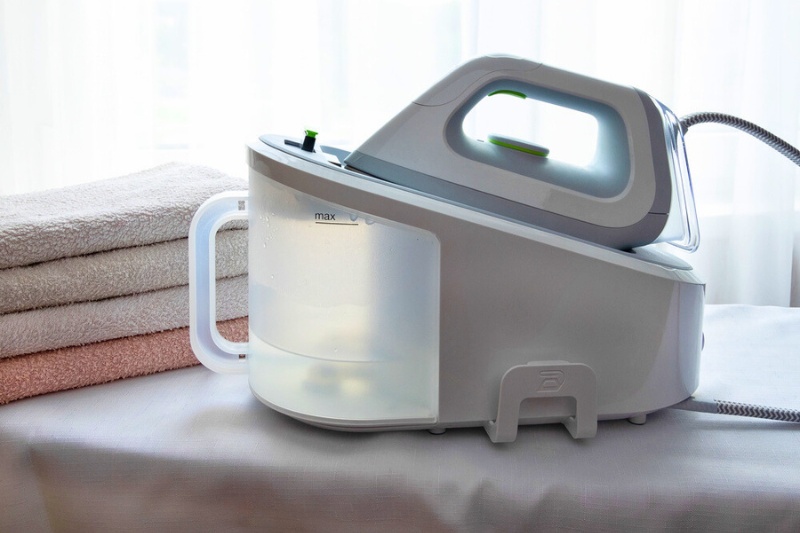
While larger water tanks offer several advantages, they also make steam generator irons bulky.
With that in mind, you’ll need a dedicated space to store your machine after use. And you’ll also need an ironing board with space to hold the base unit, and which won’t collapse or tip under its weight. Otherwise, you’ll be restricted to ironing next to a countertop or table.
Additionally, steam generators are more expensive to buy than steam irons. And since bigger tanks are more susceptible to limescale, you’ll have to descale your iron more often.
Or you could buy one with a built-in descaling system. This is especially useful if you live in a hard water area. But of course, this additional feature can push the cost up further.
Another disadvantage of steam generator irons is the noise they produce. While steam irons are pretty quiet, generators feature pumps to build and maintain steam pressure. And these can be quite loud! So much so, that you may not be able to iron while your kids are sleeping!
Conclusion: Is a Steam Generator Better Than a Steam Iron?
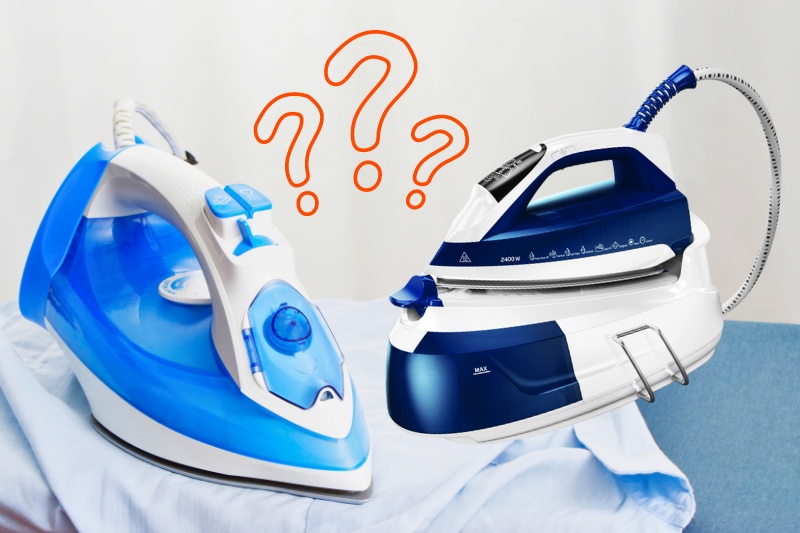
To conclude, there are pros and cons to both steam irons and steam generators. Steam irons are cheaper, smaller and produce enough steam for small piles of laundry.
You can also refill them and use them for longer, without having to wait long for the water to heat up.
Most have variable temperature settings too, which makes switching between different garments simple.
However, steam generator irons are undoubtedly more powerful, run for longer and make light work of deeply wrinkled fabrics.
Therefore, if you do a lot of ironing each week and you like crisp shirts and sheets, you may want to upgrade.
Many can also be used upright to steam hanging garments and curtains, without having to unhook them – handy!
But, you will usually have to pay more for a steam generator iron and invest in a sturdy ironing board to accommodate it.
Some models also lack the adjustable temperature gauge that most steam irons have, so choose your machine carefully if you frequently iron a mix of fabrics. And don’t forget that generators can be noisy, so stick to a steam iron if you prefer quiet machines.
Want more ironing tips? From the best way to iron a shirt to a breakdown of the different iron temperature settings and their uses, we’ve got you covered. Browse our dedicated laundry section to learn more.

A proud Yorkshire lass with a love for movies, music and cosy nights in! Once a self-confessed avoider of cleaning, she’s always on the lookout for new ways to make household chores as quick and simple as possible.
